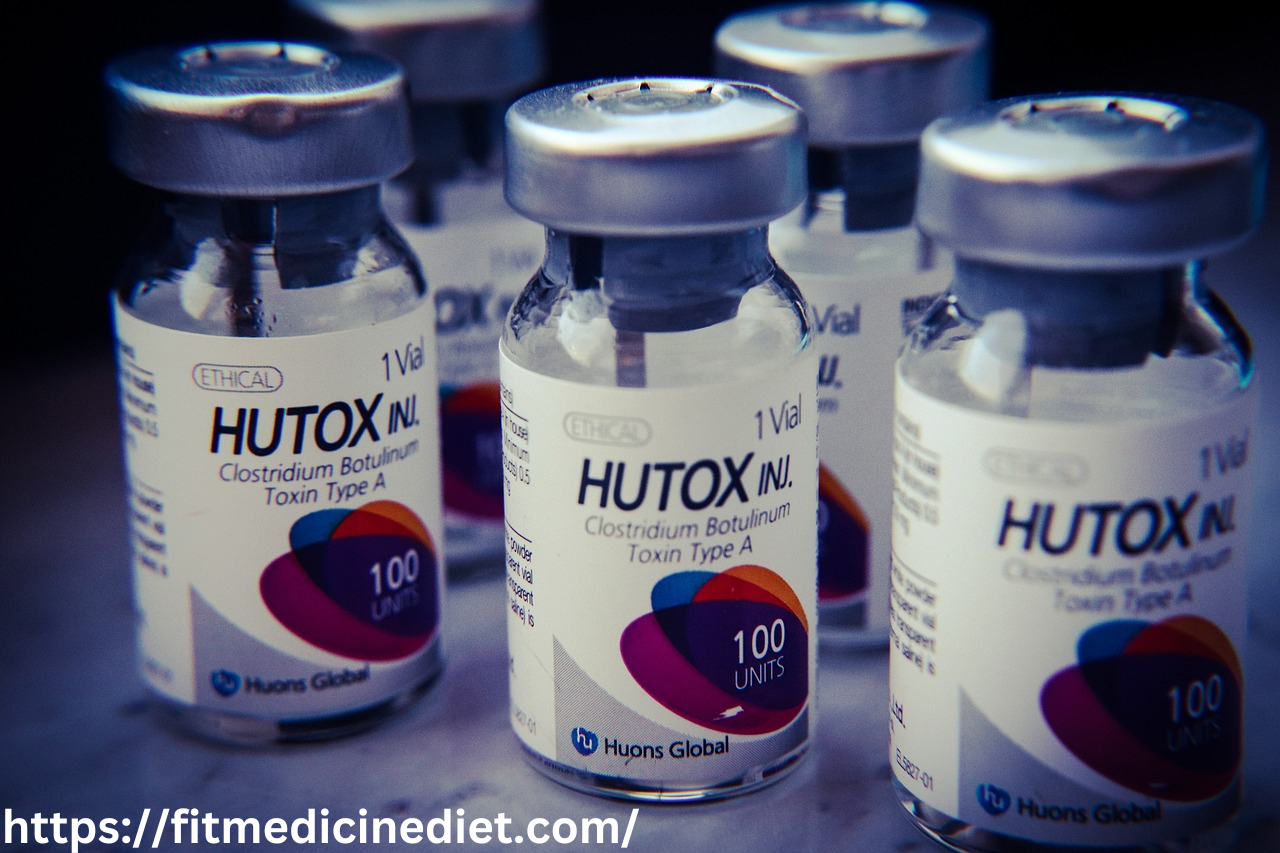
Botox in Traps: A 100% Relieving Tension and Pain
Botox in Traps, derived from the bacterium Clostridium botulinum, has gained significant popularity for its cosmetic applications in reducing wrinkles and fine lines. However, its benefits extend beyond aesthetics, with emerging uses in addressing various medical conditions. One such application is the use of Botox in treating tension and pain in the trapezius muscles, commonly referred to as “Botox in traps.”
Understanding Botox and Trapezius Muscles
Botox, or botulinum toxin, works by temporarily blocking nerve signals to specific muscles, leading to muscle relaxation. The trapezius muscles are a pair of large muscles located on the upper back and neck, responsible for stabilizing and moving the shoulder blades and supporting the neck and head.
Benefits of Botox in Traps
Pain Relief
Chronic tension in the trapezius muscles can result in persistent neck and shoulder pain. Botox injections help relax these muscles, providing relief from discomfort and tightness.
Improved Posture
By reducing muscle tension, Botox in traps can aid in correcting posture issues caused by overactive trapezius muscles. This can alleviate strain on the neck and shoulders and promote better spinal alignment.
Reduction of Tension Headaches
Tightness in the trapezius muscles is often associated with tension headaches. Botox injections can help alleviate the frequency and severity of these headaches by relaxing the muscles and reducing pressure on surrounding nerves.
Procedure of Administering Botox in Traps
Before undergoing Botox treatment, individuals should schedule a consultation with a qualified healthcare provider. During this consultation, the provider will assess the patient’s medical history, symptoms, and treatment goals to determine if they are a suitable candidate for Botox in traps.
If deemed appropriate, the injection process involves the targeted administration of Botox into specific points within the trapezius muscles. The procedure is relatively quick and typically performed in an outpatient setting.The procedure is usually fast and commonly conducted on an outpatient basis.
Following the injections, patients may experience mild discomfort or bruising at the injection sites.However, these side effects typically fade away within a few days and are temporary.
Risks and Side Effects
While Botox in traps is generally safe, it can carry some risks and potential side effects.
Temporary Weakness
In some cases, individuals may experience temporary weakness or drooping of nearby muscles following Botox injections. However, this effect is transient and resolves on its own within a few weeks.
Injection Site Pain
Mild pain or tenderness at the injection sites is common but typically resolves quickly. Using ice packs and over-the-counter pain relievers can assist in easing discomfort.
Allergic Reactions
Although rare, allergic reactions to Botox can occur. Symptoms may include itching, rash, difficulty breathing, or swelling of the face or throat. Those who experience these symptoms should promptly seek medical assistance.
Duration of Results
The effects of Botox in traps typically begin to manifest within a few days to a week after treatment and can last for several months. However, the duration of results may vary depending on individual factors such as metabolism, muscle activity, and the dosage administered.
Cost Considerations
The cost of Botox in traps can vary depending on factors such as the provider’s expertise, geographic location, and the number of units required for treatment. While Botox injections are generally not covered by insurance for cosmetic purposes, some insurance plans may offer coverage for medically necessary treatments.
Who Should Consider Botox in Traps?
Botox in traps may be suitable for individuals experiencing chronic neck and shoulder pain due to muscle tension or spasms. It is also an option for those seeking non-invasive treatment alternatives to oral medications or surgical interventions.
Alternatives to Botox in Traps
While Botox injections can be effective for relieving tension and pain in the trapezius muscles, there are alternative treatment options to consider.
Physical Therapy
Physical therapy techniques such as massage, stretching exercises, and postural correction can help alleviate muscle tension and improve flexibility in the neck and shoulders.
Oral Medications
Nonsteroidal anti-inflammatory drugs (NSAIDs) or muscle relaxants may be prescribed to manage pain and reduce muscle spasms in the trapezius muscles.
Surgical Interventions
In severe cases where conservative treatments fail to provide relief, surgical interventions such as trigger point injections or nerve decompression surgery may be considered.
Real-Life Experiences
Many individuals who have undergone Botox in traps treatment report significant improvements in their symptoms, including reduced pain, increased range of motion, and enhanced quality of life. Testimonials from patients often highlight the effectiveness and convenience of this non-invasive treatment option.
Myths and Misconceptions
Despite its proven efficacy, Botox in traps is often surrounded by myths and misconceptions.
Botox Being Only for Cosmetic Purposes
While Botox is widely known for its cosmetic benefits, its therapeutic applications, including pain management, are well-documented and supported by scientific research.
Fear of Paralysis
There is a common misconception that Botox injections can lead to permanent paralysis or loss of muscle function. However, when administered by a qualified healthcare professional, Botox is safe and unlikely to cause long-term adverse effects.
Latest Research and Developments
Ongoing research in the field of botulinum toxin therapy continues to explore new formulations and delivery methods for optimizing the efficacy and safety of Botox treatments. Recent advancements include the development of longer-lasting formulations and targeted delivery techniques for more precise muscle targeting.
Consultation and Preparation Tips
Before undergoing Botox in traps treatment, individuals should prepare for their consultation with a healthcare provider by compiling a list of questions and concerns regarding the procedure. It is essential to provide accurate information about medical history, current medications, and any allergies or sensitivities.
Post-Treatment Care Tips
Following Botox injections, patients should follow their healthcare provider’s instructions for post-treatment care. This may include avoiding strenuous activities, applying ice packs to reduce swelling, and monitoring for any signs of adverse reactions.
Conclusion
Botox in traps offers a safe and effective solution for individuals struggling with chronic neck and shoulder pain caused by muscle tension. By temporarily relaxing the trapezius muscles, Botox injections can provide significant relief and improve overall quality of life. With proper consultation and administration, Botox in traps can be a valuable tool in the management of musculoskeletal disorders.
FAQs
What is the difference between Botox in traps and traditional Botox treatments?
- Botox in traps specifically targets the trapezius muscles to relieve tension and pain, whereas traditional Botox treatments are primarily used for cosmetic purposes, such as reducing facial wrinkles.
Can Botox in traps help with migraines?
- While Botox injections have been FDA-approved for the treatment of chronic migraines, their effectiveness in relieving tension headaches associated with trapezius muscle tension is still being studied.
Is Botox in traps covered by insurance?
- Coverage for Botox in traps may vary depending on the individual’s insurance plan and the medical necessity of the treatment.
- How soon can I expect to feel relief after the procedure?
- The effects of Botox in traps typically begin to manifest within a few days to a week after treatment, with peak results reached within two weeks.
Are there any long-term effects of repeated Botox treatments?
- Long-term studies on the effects of repeated Botox treatments have shown that when administered by a qualified healthcare professional, Botox is generally safe and well-tolerated, with minimal risk of long-term adverse effects.


